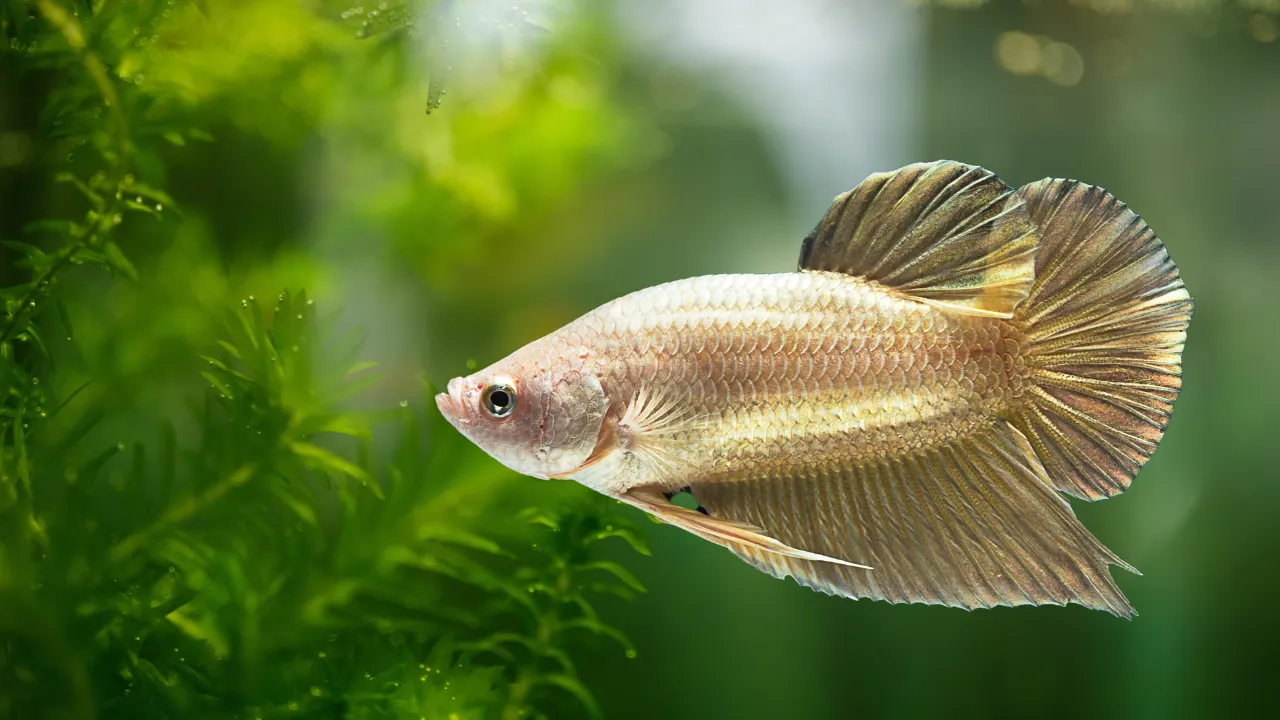Dragon Siamese Fighting Fish Female is filled with a vibrant array of colors, fin types, and patterns. This comprehensive Betta Fish Guide delves into the captivating world of Dragon Bettas, exploring their unique characteristics, care requirements, and the different types that grace the aquariums of enthusiasts worldwide.
What Makes a Betta a “Dragon”?
The term “Dragon” itself isn’t a specific breed of Betta fish, but rather a descriptive term used within the Betta community. This captivating moniker is attributed to certain physical traits that evoke the image of mythical dragons, primarily focusing on their scales and finnage.
Key Dragon Betta Characteristics:
- Thick, prominent scales: This trait, known as “dragonscaling,” gives the fish a heavily armored appearance, reminiscent of a dragon’s scales. The scales possess an extra layer of metallic pigment, creating a stunning iridescent effect.
- Elongated, flowing fins: Dragon Bettas often boast longer finnage compared to other varieties. These flowing fins, particularly the caudal (tail) fin, enhance their majestic appearance, further contributing to the dragon-like image.
- Bold, vibrant colors: While not exclusive to Dragon Bettas, their striking colors, often metallic or iridescent, amplify their already impressive appearance. Popular color variations include reds, oranges, blues, and greens, often with contrasting highlights.
Exploring the World of Dragon Betta Varieties
The term “Dragon” encompasses a wide range of Betta variations, each possessing unique characteristics and captivating beauty. Here are some popular types:
Dragon Scale Betta (Traditional Dragon)
This variety embodies the quintessential Dragon Betta look. They possess thick, prominent scales with an iridescent sheen, giving them a heavily armored appearance. Their fins are typically longer than average, further enhancing their majestic presence.
Care Level: Intermediate to Advanced. The unique scales of Dragon Scale Bettas can sometimes lead to swim bladder issues if overfed or kept in inadequate water conditions.
Copper Dragon Betta
As their name suggests, Copper Dragon Bettas showcase a stunning copper coloration. This metallic hue, combined with their thick scales and flowing fins, creates a truly captivating spectacle.
Care Level: Beginner to Intermediate. Copper Dragon Bettas are generally hardy, making them a suitable choice for both novice and experienced keepers.
Yellow Dragon Betta
Yellow Dragon Bettas radiate a vibrant yellow hue, often with hints of orange or gold. Their thick scales and flowing fins further accentuate their striking appearance.
Care Level: Beginner to Intermediate. Like their Copper counterparts, Yellow Dragon Bettas are generally easy to care for, making them a popular choice among enthusiasts.
Dragon HMPK (Halfmoon Plakat) Betta
This variety combines the striking appearance of a Dragon Betta with the powerful build and short, agile fins of a Plakat Betta. The result is a fish that is both visually stunning and capable of impressive agility.
Care Level: Intermediate. Dragon HMPKs require careful attention to water parameters and diet to maintain their health and activity levels.
Dragon Female Betta
While male Bettas are renowned for their flowing fins and vibrant colors, female Dragon Bettas possess their own unique charm. They exhibit the same thick, iridescent scales as their male counterparts, but with shorter, more compact fins.
Care Level: Beginner to Intermediate. Female Dragon Bettas are generally hardy and adaptable, making them a suitable choice for a community tank with careful consideration for tank mates.

Caring for Your Dragon Betta: Essential Tips
Providing a suitable environment is crucial for the health and well-being of your Dragon Betta.
Tank Requirements
- Tank Size: A minimum of 5 gallons is recommended for a single Dragon Betta. Larger tanks are always preferable, especially if housing multiple females or a community tank.
- Filtration: A gentle filter is essential to maintain water quality without creating strong currents that can stress Bettas.
- Heater: Bettas are tropical fish and thrive in temperatures between 78-82°F (25-28°C). A reliable heater is crucial to maintain a stable temperature.
- Decor and Substrate: Provide plenty of hiding places using plants, caves, and rocks. Choose a soft substrate that won’t damage their delicate fins.
Water Parameters
- pH: Aim for a slightly acidic to neutral pH of 6.5-7.5.
- Ammonia and Nitrite: These should always be at 0 ppm.
- Nitrate: Maintain levels below 20 ppm.
Feeding Your Dragon Betta
- Diet: Bettas are carnivores and require a protein-rich diet. Offer high-quality betta pellets supplemented with live or frozen foods like bloodworms, brine shrimp, and daphnia.
- Feeding Frequency: Feed adults once or twice a day, offering only what they can consume in 2-3 minutes.
Common Questions About Dragon Bettas:
Are Dragon Bettas Aggressive?
Like all Siamese Fighting Fish, male Dragon Bettas are known for their territorial nature and should not be housed together. Females can be kept in groups with careful observation and a spacious tank.
How Long Do Dragon Bettas Live?
With proper care, Dragon Bettas can live for 2-5 years. Providing a suitable environment, a balanced diet, and regular water changes are crucial for their longevity.
Can I Keep Other Fish with My Dragon Betta?
While not impossible, keeping tank mates with Bettas requires careful consideration. Avoid any fin-nipping species or fish that may trigger their aggression.
How Can I Tell if My Dragon Betta is Healthy?
A healthy Dragon Betta will have vibrant colors, clear eyes, and smooth, undamaged fins. They should be active and have a healthy appetite.
Conclusion
Dragon Bettas, with their captivating appearance and engaging personalities, make captivating additions to any aquarium. By understanding their unique needs and providing proper care, you can enjoy the beauty and wonder of these majestic creatures for years to come. Remember to always research thoroughly before acquiring any new pet and ensure you can provide a suitable environment for their well-being.

Related Posts
Are Betta Fish Nocturnal? Mystery of Betta Sleep Patterns
Shrimp Tank Mates: Choosing The Right Companions
Are Fish Omnivores? A Look at Fish Feeding Habits